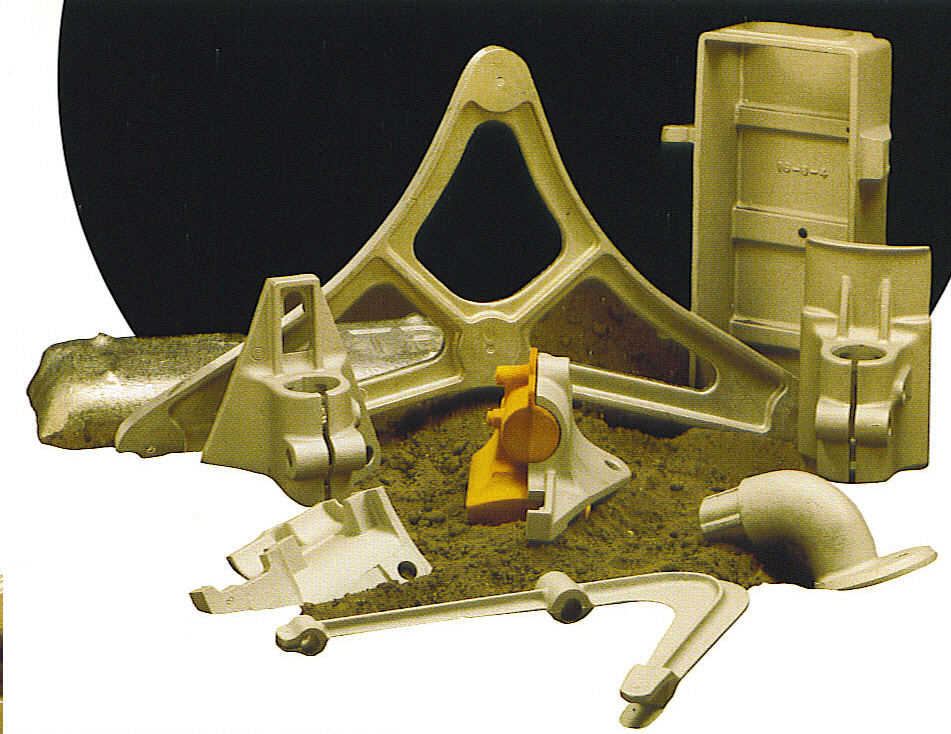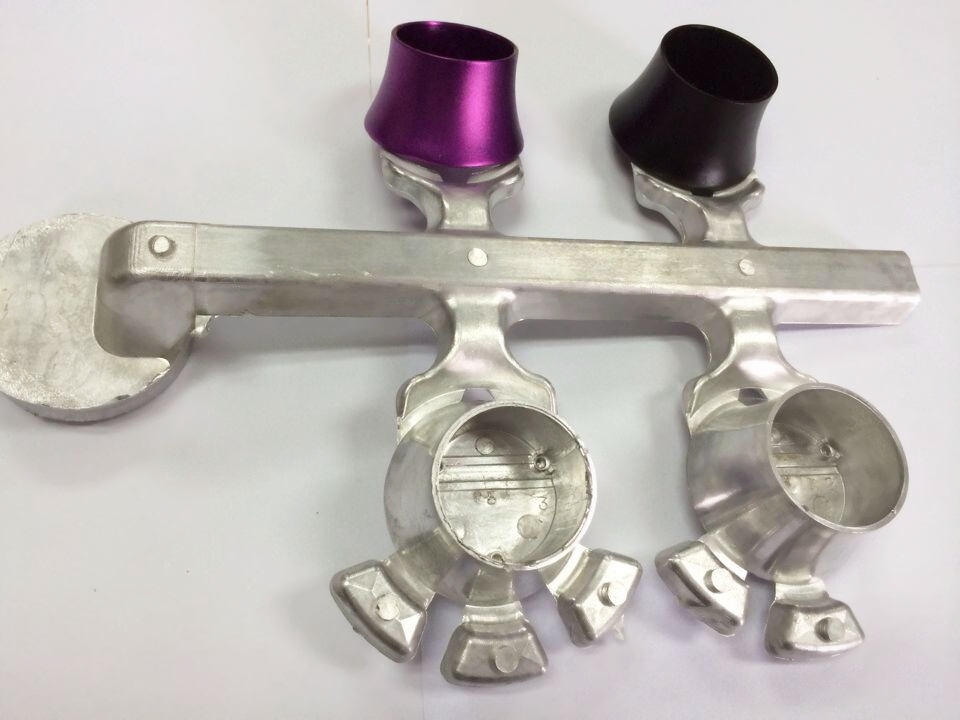All About Aluminum Castings: Recognizing Their Function and Value in Production
Aluminum spreadings are integral to modern manufacturing, using a blend of light-weight residential or commercial properties and longevity. They promote intricate styles while reducing setting up prices. Industries such as automotive and aerospace regularly use these elements for boosted performance. Nevertheless, the production of light weight aluminum castings is not without its difficulties. Understanding the nuances of this process reveals both the benefits and potential pitfalls. Exploring these elements will certainly give deeper understandings right into their expanding value.
Review of Light Weight Aluminum Casting Processes
Light weight aluminum casting procedures play a necessary duty in production, supplying versatility and performance. These processes involve putting liquified aluminum into molds to develop specific forms and components. Various techniques are used, consisting of sand spreading, die spreading, and financial investment casting, each differentiated by its method of mold and mildew production and the intended application.
Sand spreading uses a mixture of sand and binder to create molds, permitting for complicated geometries. Die casting, on the various other hand, involves requiring molten light weight aluminum right into steel molds, causing high accuracy and smooth coatings. Investment casting, frequently utilized for intricate designs, involves creating a wax pattern coated with a ceramic covering, which is after that loaded with liquified aluminum.
These casting approaches accommodate diverse industrial needs, making aluminum a favored material for components in industries such as automotive, aerospace, and durable goods. The option of casting technique considerably influences the final item's high quality and performance.
Benefits of Utilizing Light Weight Aluminum Castings
The advantages of using light weight aluminum castings in production are considerable and countless. To begin with, light weight aluminum's light-weight nature adds to lowered overall product weight, enhancing energy effectiveness in applications such as aerospace and automotive sectors. Additionally, aluminum castings exhibit excellent deterioration resistance, guaranteeing durability and durability in rough settings. The material's thermal and electric conductivity likewise makes it ideal for numerous applications, including electronic devices and warm exchangers.
On top of that, light weight aluminum castings can be produced with detailed layouts, enabling for extra complicated forms that satisfy specific useful requirements. This convenience adds to reduced assembly expenses and enhanced style flexibility. Moreover, the casting process itself is reliable, enabling for high-volume production with constant top quality. Light weight aluminum is recyclable, making it an environmentally friendly alternative in manufacturing. Collectively, these advantages highlight why aluminum spreadings are increasingly preferred across diverse sectors, using both performance advantages and economic effectiveness.
Usual Applications of Light Weight Aluminum Castings
While various materials are utilized in production, light weight aluminum castings attract attention due to their broad variety of applications throughout multiple industries. These castings are widely made use of in the automotive industry for engine elements, transmission real estates, and structural components, adding to lighter automobiles and enhanced fuel performance. In the aerospace sector, aluminum castings are vital for airplane elements, where weight reduction is crucial for efficiency and safety and security.
Furthermore, the electrical sector utilizes aluminum spreadings for real estates and architectural components in machinery, benefiting from the product's outstanding conductivity. In durable goods, light weight aluminum castings can be discovered in products such as appliances and sporting devices, offering sturdiness and a contemporary visual. The building market utilizes aluminum spreadings in building aspects, window frames, and fixtures, showcasing their flexibility and strength. In general, aluminum spreadings play an essential function in improving item efficiency and efficiency throughout different industries.
Key Production Techniques for Aluminum Castings
The manufacturing of light weight aluminum spreadings depends on various methods, with sand spreading and pass away spreading being amongst the most prominent. Sand spreading involves developing mold and mildews from sand, allowing for detailed designs and huge parts. On the other hand, pass away casting utilizes high-pressure injection of liquified light weight aluminum right into recyclable molds, offering precision and performance for automation.
Sand Spreading Refine
Sand spreading stands as one of the most commonly made use of techniques for generating aluminum castings, many thanks to its adaptability and cost-effectiveness. This process includes developing a mold and mildew from a mix of sand and a bonding agent, commonly clay. Once the mold is ready, molten aluminum is poured right into it, enabling the steel to load the cavity. After cooling down, the mold and mildew is escaped to reveal the casting. Sand casting fits complicated geometries and huge components, making it appropriate for different applications. In addition, it enables for simple alterations, allowing manufacturers to readjust styles quickly. The surface area finish might call for added machining for accurate applications, making sure the final item satisfies top quality criteria.
Pass Away Spreading Approaches
Pass away casting represents an extremely reliable approach for generating light weight aluminum spreadings, defined by its capability to provide high precision and excellent surface coating. This method mostly involves compeling liquified aluminum into a mold and mildew under high pressure, making sure that fine details and detailed shapes are captured precisely. There are 2 primary die casting approaches: warm chamber and cool chamber. Hot chamber die spreading appropriates for alloys with low melting factors and permits faster cycles, while chilly chamber die casting is suitable for high-temperature alloys, requiring different melting systems. Both techniques boost production prices and minimize material waste, making die casting a recommended option in industries such as auto and electronic devices, where sturdiness and dimensional accuracy are vital.
Sustainability in Aluminum Casting Production
While the need for aluminum spreadings remains to grow, makers are significantly focusing on sustainability in their production processes. This change is driven by the requirement to lower ecological impact and save natural deposits. Several business are taking on reusing initiatives, using scrap light weight aluminum, which especially decreases power usage and greenhouse gas exhausts contrasted to key aluminum production. In addition, innovations in casting modern technologies are enabling a lot more reliable use products, decreasing waste throughout the manufacturing process.
Makers are additionally redirected here exploring green alternatives to typical casting methods, such as 3D printing and advanced mold modern technologies, which aid maximize source use. Wisconsin Aluminum Foundry. Furthermore, applying lasting methods in supply chain monitoring guarantees that raw materials are sourced responsibly. As a result, the aluminum spreading sector is making strides toward a more sustainable future, lining up with worldwide environmental goals while fulfilling the raising need for high-performance light weight aluminum items
Obstacles and Factors To Consider in Light Weight Aluminum Casting
Aluminum casting presents various obstacles that suppliers have to browse to assure item stability. Style complexity can complicate the spreading procedure, bring about possible defects and increased manufacturing time. In addition, preserving rigorous top quality control criteria is important to satisfy the demands of precision and dependability in finished parts.

Design Intricacy Issues
Designing components for aluminum spreading offers numerous intricacies that designers should navigate to achieve perfect results. One substantial challenge is the need for accurate geometry; intricate layouts can bring about troubles in mold development and enhanced risk of issues. Additionally, thermal properties of aluminum require cautious consideration of cooling rates, as uneven air conditioning can trigger warping. Wall thickness variants likewise position a challenge, as they can influence circulation features and structural stability. Engineers should balance layout aesthetics with manufacturability, making certain that functions such as fillets and ribs are optimized for stamina without making complex the spreading procedure. Considerations relating to draft angles are essential to help with mold and mildew launch, additional making complex the design procedure. These factors jointly emphasize the ins and outs involved in aluminum casting layout.
Quality Assurance Obstacles
Achieving high-grade aluminum castings includes steering a variety of high quality control obstacles that can substantially impact the end product. First, variations in basic material make-up can cause disparities in casting homes, making it crucial to ensure worldly quality. Second, the spreading procedure itself is vulnerable to issues, such as porosity and shrinkage, which can endanger structural integrity. Additionally, temperature level control throughout melting and putting is critical; fluctuations can result in irregular solidification, influencing dimensional precision. In addition, comprehensive evaluation methods, including non-destructive screening, have to be used to determine issues early. Keeping stringent procedure paperwork and adherence to industry requirements is essential for traceability and high quality guarantee, highlighting the detailed balance called for to produce trustworthy aluminum spreadings in manufacturing.
Future Trends in Aluminum Spreading Technology
As suppliers venture to improve effectiveness and sustainability, innovations in light weight aluminum spreading innovation are emerging to satisfy these needs. One considerable fad is the combination of automation and expert system, which streamline manufacturing procedures and enhance accuracy in casting procedures. These developments minimize human error and enhance resource usage, inevitably resulting in cost reductions.
Additionally, the adoption of innovative materials and alloys is reshaping the landscape. New solutions boost performance qualities, such as deterioration resistance and light-weight homes, making light weight aluminum spreadings extra flexible throughout various markets.
Sustainable practices are acquiring grip, with an emphasis on recycling and minimizing waste (Aluminum Foundry). Strategies such as 3D printing are also being explored to create intricate geometries that were previously unattainable
Frequently Asked Questions

Exactly How Do Light Weight Aluminum Castings Compare to Other Products?
Light weight aluminum spreadings provide advantages such as light-weight, corrosion resistance, and excellent thermal conductivity contrasted to other products. They are often chosen for applications needing durability and efficiency, especially in automobile and aerospace sectors.
What Is the Life-span of Light Weight Aluminum Castings?
The life-span of aluminum spreadings normally ranges from 10 to 50 years, relying on environmental conditions, usage, and maintenance. Their deterioration resistance and resilience contribute noticeably to their durable efficiency in numerous applications.
Can Light Weight Aluminum Castings Be Recycled?
Yes, light weight aluminum castings can be recycled. The reusing process is efficient, enabling the recovery of light weight aluminum without considerable loss of additional resources quality, making it a sustainable choice in production and reducing environmental effect.
What Precaution Are Needed During Light Weight Aluminum Casting?
During aluminum casting, essential precaution consist of using suitable personal safety equipment, making certain correct ventilation, preserving devices, using fire-resistant navigate here products, and implementing secure handling procedures for molten metal to stop accidents and injuries.
Just How Do Temperature Modifications Influence Aluminum Castings?
Temperature adjustments markedly affect aluminum castings by influencing fluidness, solidification prices, and mechanical buildings. Quick cooling can bring about increased brittleness, while progressive air conditioning promotes much better architectural integrity and lowers the threat of flaws.
Pass away spreading, on the various other hand, includes forcing molten light weight aluminum into metal molds, resulting in high precision and smooth finishes. The production of light weight aluminum castings depends on various methods, with sand spreading and pass away casting being among the most popular. Sand casting stands as one of the most commonly used approaches for generating aluminum castings, thanks to its adaptability and cost-effectiveness. Die casting represents an extremely effective method for creating aluminum spreadings, defined by its capability to provide high accuracy and superb surface area coating. While the demand for light weight aluminum castings continues to grow, suppliers are significantly focusing on sustainability in their manufacturing procedures.